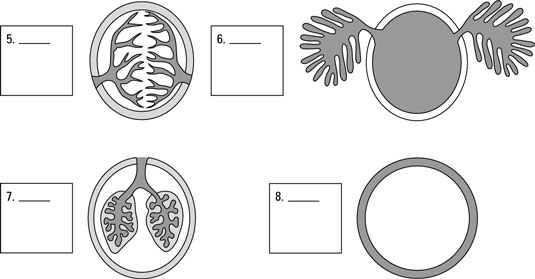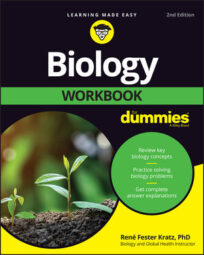Respiration is the exchange of life-sustaining gases, such as oxygen, between an animal and its environment. Gas exchange occurs by diffusion, moving necessary gases like oxygen into animals and taking away waste gases like carbon dioxide. Although animals have different ways of moving gases in and out of their bodies, gas exchange between the animal and its environment occurs across a moist surface.
Most animal respiration involves four steps:
-
Taking air in (inspiration) and pushing air out (expiration). The term breathing refers to the processes of inspiration and expiration in humans and many other animals.
-
Circulating gases throughout the body.
-
Exchanging needed gases for unnecessary gases.
-
Using the needed gases.
Depending on the complexity of their bodies and the environment in which they live, animals evolved different systems to achieve respiration. Four basic types of gas-exchange systems occur in animals:
-
Integumentary exchange occurs through the outer surface of some small animals that constantly stay moist.
-
Gills are structures that extend outward from an animal’s body to exchange gases in watery environments.
-
Tracheal exchange systems rely on a network of tubes that end in holes to move oxygen and carbon dioxide throughout the bodies of certain types of insects.
-
Lungs are structures that extend into an animal’s body, creating moist internal surfaces that use diffusion to transport gases into and out of the body.
For questions 1–4, use the terms below to identify which part of respiration is blocked by the condition stated in the question.
a. Breathing
b. Circulation
c. Gas exchange
d. Cellular respiration
-
A girl with anemia doesn’t have enough of the protein hemoglobin to carry oxygen in her red blood cells.
-
A boy with exercise-induced asthma suffers narrowing of his airways during exercise.
-
A woman has emphysema, which damages the air sacs of her lungs, reducing the amount of surface area for gas exchange.
-
A man accidentally swallows a large piece of food that extends his food tube so that it pinches off his windpipe.
For questions 5–8, use the following terms to label each type of gas-exchange system in the figure. Also, state one example of an animal that would have each system.
a. Integumentary exchange
b. Lungs
c. Gills
d. Tracheal exchange system

The following are answers to the practice questions presented.
-
The answer is b. Circulation.
Circulation is affected because she can’t effectively circulate the oxygen she breathes.
-
The answer is a. Breathing.
Breathing is affected because he can’t draw in enough air.
-
The answer is c. Gas exchange.
Gas exchange is affected because she doesn’t have enough surface area in her lungs.
-
The answer is a. Breathing.
Breathing is affected because he can't inhale any air.
-
The answer is d. Tracheal exchange system.
The tracheal exchange systems occur in insects like grasshoppers.
-
The answer is c. Gills.
Fish and lobsters are two examples of organisms with gills.
-
The answer is b. Lungs.
Lungs occur in animals like mammals and birds.
-
The answer is a. Integumentary exchange.
Earthworms use integumentary exchange.

